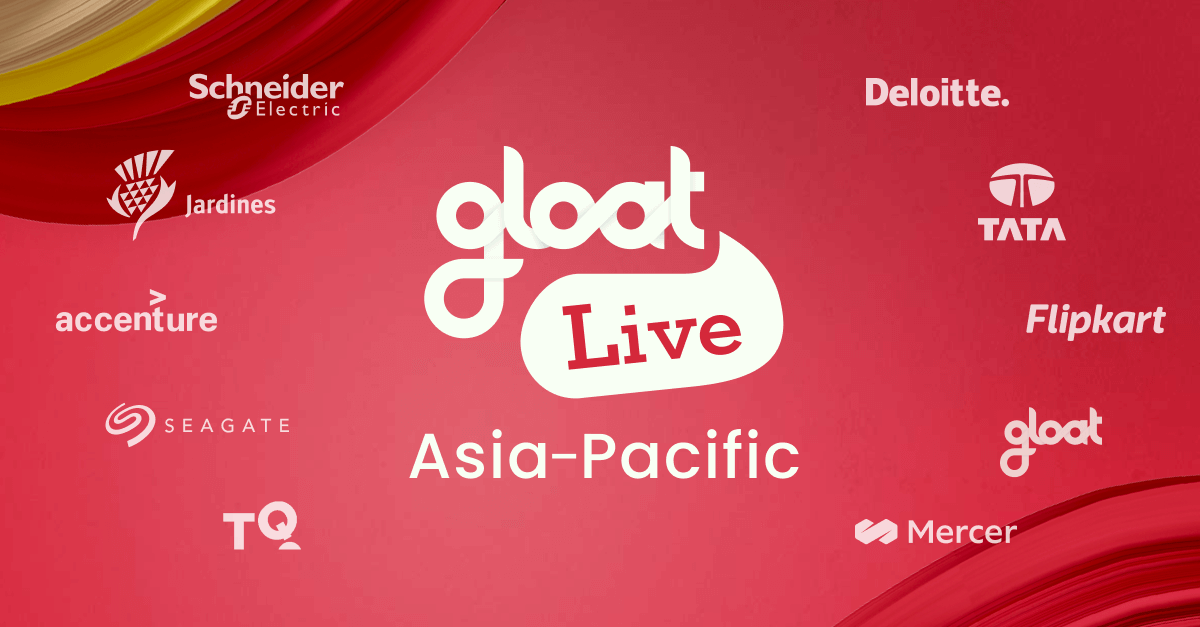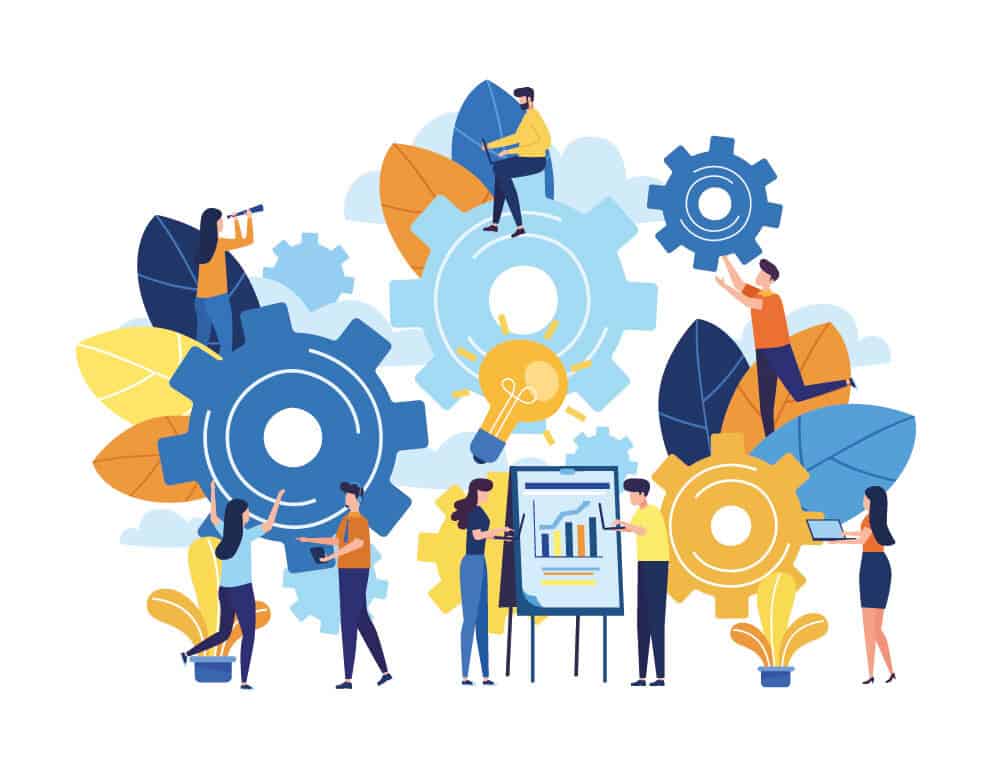7 steps to create a talent strategy built for future success
Upgrade your approach for the new world of work

From global talent shortages to massive supply chain disruptions, the new world of work has its fair share of unprecedented challenges. As a result, businesses can’t expect the same talent strategies to keep performing now that the playing field has profoundly changed.
Most HR leaders recognize that work and workplaces are in need of a shakeup. 96% of businesses are planning enterprise-wide transformations for the year ahead, but not all transformation approaches are created equally—nor do they yield the same results.
Reimagining talent strategies sits at the heart of impactful workplace transformation initiatives. As employee expectations shift and skill gaps widen, it’s up to HR leaders to architect new ways of working that enable executives to tap into all of the skills their workforce has to offer.
What is a talent strategy?
Talent strategy is a broad term used to describe how you source, hire, onboard, engage, develop, and retain employees in your workforce. It’s about having the right talent in the right places so your organization can quickly shift gears to meet evolving priorities.
To unlock the level of agility that the new world of work demands, leaders must leverage transformative technologies like a workforce agility platform to gain a complete understanding of the skills within their organization. Once executives have a full picture of their workforce’s capabilities, they can rapidly reallocate talent to meet new challenges in real-time.
Simultaneously, leaders should prioritize purpose-led career development, particularly as talent shortages shift the power dynamics of the employee-employer relationship in workers’ favor. To retain and engage the talent your organization needs, businesses must ensure employees have access to a breadth of development opportunities that align with their interests and professional ambitions.
7 building blocks for an impactful talent strategy
While most HR leaders understand that an impactful talent strategy will be crucial in the new world of work, there’s a lot of uncertainty about what it takes to devise a winning approach. Every organization’s talent strategy will be unique, but most successful initiatives share the following building blocks:
#1. Shift to an internal mindset
The days of relying on external recruitment to bridge skill gaps are quickly coming to a close. While recruiting talent from outside of your organization may have long been the dominant way to fill vacancies and bridge knowledge gaps, leaders are learning that it pays to turn their attention inwards.
Internal mobility is a win-win for workplaces and their employees. It enables team members to take on new projects and expand their skill sets to progress their careers while helping companies save on the high costs associated with recruiting and onboarding.
Internal candidates will be able to get up to speed more quickly, in turn accelerating response times and making it easier for businesses to get key projects across the finish line. It’s also something that workers are increasingly looking for from their employers, with two out of three employees noting that they would leave a job where no internal mobility is offered.
#2. Identify skill gaps
The term “skills-based organization” is more than just a new buzzword; it’s a game-changing approach to restructuring work that enables enterprises to unlock greater agility and maximize output levels. When work is deconstructed into projects and gigs, talent from across the organization can lend their time and skills to ensure high-priority tasks get completed in record time.
Behind every successful skills-based organization is workforce intelligence, which equips leaders with insights into the capabilities their workforce has and the knowledge gaps they need to bridge next. While an in-depth understanding of the capabilities within your organization is essential for fueling skills-based strategies, two in five HR leaders acknowledge that they don’t know what skills they have in their workforce.
#3. Break down barriers
All too often, talent strategies are hindered by potentially bias-inducing factors: where someone went to school, their geographic proximity, or a number of other attributes that don’t reflect an employee’s competency. As a result, leaders may overlook candidates with the skills and experience needed to excel in new roles or take the reigns on business-critical projects.
Rather than letting external factors limit your talent pools, AI-powered platforms can take bias out of the equation. The talent marketplace within a workforce agility platform generates suggestions for best-fit internal candidates based on their skills and experiences, and nothing else—opening hiring managers’ eyes to employees whose potential may have once gone untapped.
#4. Use AI to your advantage
As the pace of innovation accelerates and disruption becomes a near-constant presence, organizations can no longer rely on manual tools to keep tabs on their employees’ skills and interests. Leaders need a comprehensive picture of their workforce’s skills and their people’s career goals that can adapt in real-time, as both employee ambitions and business needs change.
That’s where AI-powered workforce agility platforms come into play. By pairing the talent marketplace with workforce intelligence, these platforms create a continuous loop of insight to action. Real-time data on companies, employees, competencies, aspirations, and skills provide hyper-relevant information that business leaders can use to reallocate employees strategically, unlock agility, and optimize their talent strategies.
#5. Support employees from the start
Every stage of the employee lifecycle is important, but onboarding is particularly critical. Your employees’ first few months on the job set the tone for their workplace experience and create the foundational knowledge they’ll reference throughout their career at your organization.
To set everyone up for success, new team members need access to a breadth of learning and development opportunities that span different mediums and formats. While coursework and video content are steps in the right direction, recent joiners also benefit from having the opportunity to put these lessons into practice. With a talent marketplace, all team members can apply for experiential learning opportunities such as projects, gigs, mentoring, and shadowing, ensuring everyone has the chance to get the hands-on guidance they need to advance their careers.
#6. Keep everyone engaged
At some point in their professional journey, every employee will want to take their career in a new direction or reach a higher level. In the past, many workers looking to expand their horizons ended up calling it quits because they didn’t see relevant internal growth opportunities within their own organization.
As talent shortages continue and knowledge gaps widen, no business can afford to watch top talent walk out the door due to a lack of mobility. To keep workers engaged in the long run, organizations must ensure their people have a window into all of the different types of career moves available to them—both laterally and vertically. With a workforce agility platform, employees can harness career pathing tools to explore the different directions their careers can take and identify the skill gaps they’ll need to bridge to reach their professional goals.
#7. Don’t forget about succession planning
It’s not enough to craft a talent strategy for the immediate future; leaders must also plan for what lies ahead. Succession planning is a critical component of talent management because it ensures that you’ll always have internal candidates who are qualified and ready to step into high-priority roles and leadership positions.
Workforce agility platforms help executives identify employees who are ready to take on new challenges and, eventually, step into new responsibilities. These tools also shed light on the skills and competencies that should be prioritized to ensure the next generation of leaders is ready to take on where their predecessors left off.
To learn more about what you can do to upgrade your talent strategies and prepare for the new world of work, find out how harnessing a workforce agility platform can future-proof your organization.




